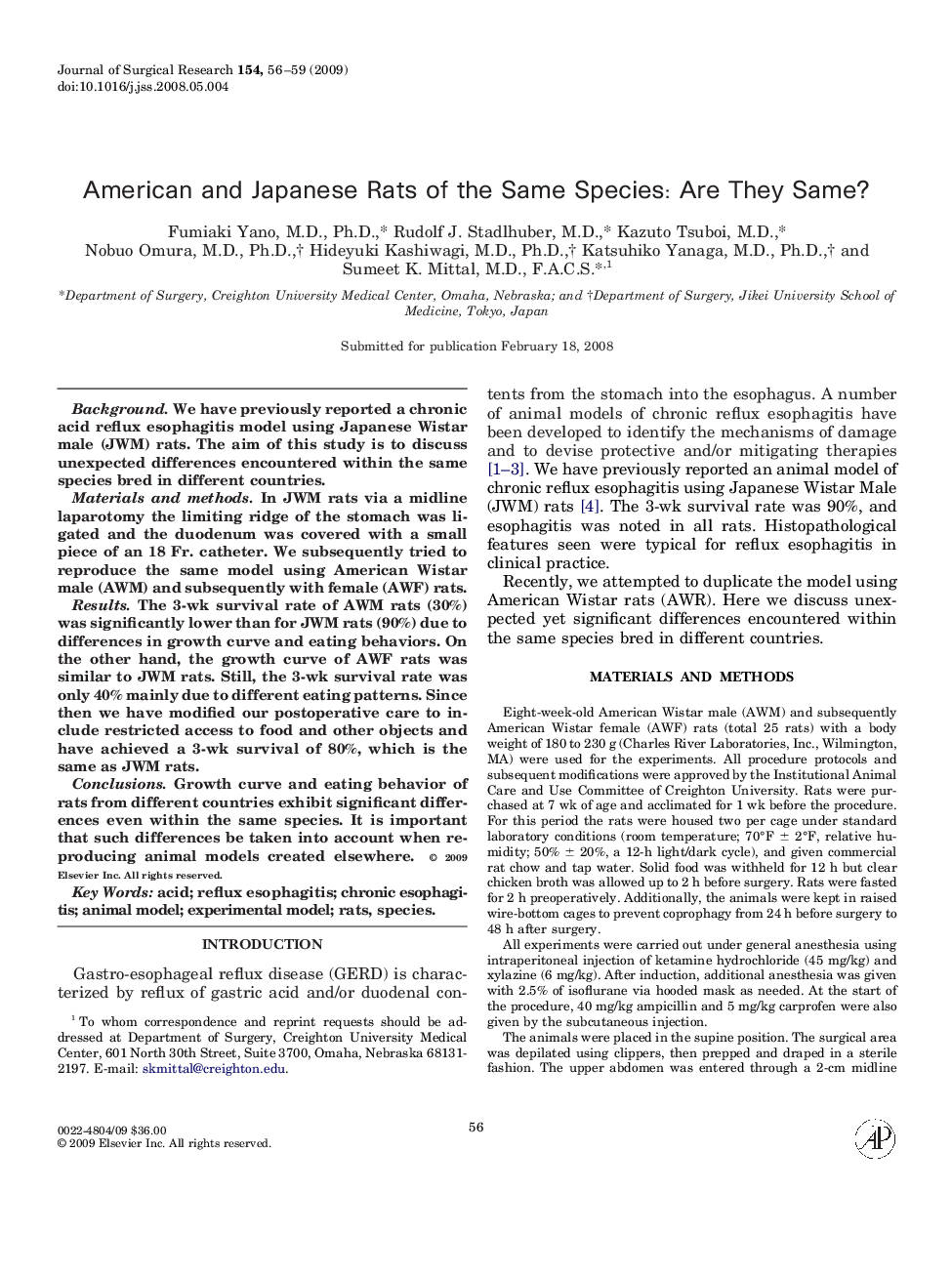| Article ID | Journal | Published Year | Pages | File Type |
|---|---|---|---|---|
| 4303816 | Journal of Surgical Research | 2009 | 4 Pages |
BackgroundWe have previously reported a chronic acid reflux esophagitis model using Japanese Wistar male (JWM) rats. The aim of this study is to discuss unexpected differences encountered within the same species bred in different countries.Materials and methodsIn JWM rats via a midline laparotomy the limiting ridge of the stomach was ligated and the duodenum was covered with a small piece of an 18 Fr. catheter. We subsequently tried to reproduce the same model using American Wistar male (AWM) and subsequently with female (AWF) rats.ResultsThe 3-wk survival rate of AWM rats (30%) was significantly lower than for JWM rats (90%) due to differences in growth curve and eating behaviors. On the other hand, the growth curve of AWF rats was similar to JWM rats. Still, the 3-wk survival rate was only 40% mainly due to different eating patterns. Since then we have modified our postoperative care to include restricted access to food and other objects and have achieved a 3-wk survival of 80%, which is the same as JWM rats.ConclusionsGrowth curve and eating behavior of rats from different countries exhibit significant differences even within the same species. It is important that such differences be taken into account when reproducing animal models created elsewhere.
